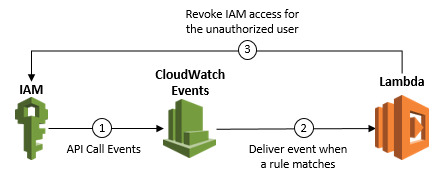AWS Security Blog
Tag: AWS Lambda
How to Simplify Security Assessment Setup Using Amazon EC2 Systems Manager and Amazon Inspector
August 15, 2021: This blog post is under construction. Please refer back to this post in a day or two for the most accurate and helpful information. In a July 2016 AWS Blog post, I discussed how to integrate Amazon Inspector with third-party ticketing systems by using Amazon Simple Notification Service (SNS) and AWS Lambda. […]
The Most Viewed AWS Security Blog Posts in 2016
September 9, 2021: Amazon Elasticsearch Service has been renamed to Amazon OpenSearch Service. See details. The following 10 posts were the most viewed AWS Security Blog posts that we published during 2016. You can use this list as a guide to catch up on your blog reading or even read a post again that you […]
Now Available: Videos from re:Invent 2016 Security and Compliance Sessions
Whether you want to review a Security and Compliance track session you attended at AWS re:Invent 2016 or you want to experience a session for the first time, videos from the Security and Compliance track and re:Source Mini Con for Security Services are now available. Note: Slide decks also will be available in the coming […]
How to Use Amazon CloudWatch Events to Monitor Application Health
Amazon CloudWatch Events enables you to react selectively to events in the cloud as well as in your applications. Specifically, you can create CloudWatch Events rules that match event patterns, and take actions in response to those patterns. CloudWatch Events lets you process both AWS-provided events and custom events (those that you create and inject […]
New Amazon Inspector Blog Post on the AWS Blog
On the AWS Blog yesterday, Jeff Barr published a new security-related blog post written by AWS Principal Security Engineer Eric Fitzgerald. Here’s the beginning of the post, which is entitled, Scale Your Security Vulnerability Testing with Amazon Inspector: “At AWS re:Invent 2015 we announced Amazon Inspector, our security vulnerability assessment service that helps customers test for […]
How to Automatically Tag Amazon EC2 Resources in Response to API Events
Note: As of March 28, 2017, Amazon EC2 supports tagging on creation, enforced tag usage, AWS Identity and Access Management (IAM) resource-level permissions, and enforced volume encryption. See New – Tag EC2 Instances & EBS Volumes on Creation on the AWS Blog for more information. Access to manage Amazon EC2 instances can be controlled using […]
How to Import IP Address Reputation Lists to Automatically Update AWS WAF IP Blacklists
Note from July 3, 2017: The solution in this post has been integrated into AWS WAF Security Automations, and AWS maintains up-to-date solution code in the companion GitHub repository. You can use AWS WAF (a web application firewall) to help protect your web applications from exploits that originate from groups of IP addresses that are known […]
How to Detect and Automatically Revoke Unintended IAM Access with Amazon CloudWatch Events
Update on October 24, 2018: Note that if you do not author the Lambda function correctly, this setup can create an infinite loop (in this case, a rule that is fired repeatedly, which can impact your AWS resources and cause higher than expected charges to your account). The example Lambda function I provide in Step […]
How to Reduce Security Threats and Operating Costs Using AWS WAF and Amazon CloudFront
Note from July 3, 2017: The solution in this post has been integrated into AWS WAF Security Automations, and AWS maintains up-to-date solution code in the companion GitHub repository. Some Internet operations trust that clients are “well behaved.” As an operator of a publicly accessible web application, for example, you have to trust that the clients […]
How to Use AWS WAF to Block IP Addresses That Generate Bad Requests
Note from July 3, 2017: The solution in this post has been integrated into AWS WAF Security Automations, and AWS maintains up-to-date solution code in the companion GitHub repository. Internet-facing web applications are frequently scanned and probed by various sources, sometimes for good and other times to identify weaknesses. It takes some sleuthing to determine the […]









